Boilie Carp Bait Secrets Of Irresistible Sugars Minerals And Salts!
Free Carp Bait Making ArticlesThis refers especially to salts and mineralised salts and traces in carp bait, as well as their impacts upon palatability, and stimulation, concentration, intensity, carp bait nutritional profile, speed and duration of efficiency of effectiveness on many levels etc. This also includes using and optimising salts within PVA bags, in pastes, ground baits particle mixtures , boilies and so on!
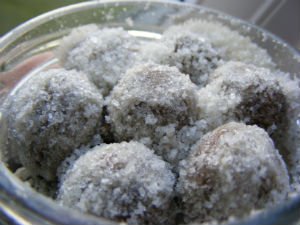
Salt Cured Homemade Boilies
Salts as carp bait are a considered a relatively new fashion! This is an expanded updated extract from my first bait secrets ebook (Big carp bait secrets,) written many years before salts became fashionable! It provides loads of stimulation and inspiration stimulation for thought (I prefer this instead of food for thought, since I prefer to catch fish in real time in the moment, and not merely feed them!) Read on!
This evolved very quickly as I really wanted to get ground bait as in boilie base mix including mineral-rich molasses meal and crushed bird seeds etc out fishing immediately around my hook baits. This kind of baiting was superior to fishing whole boilies because the fish couldn’t sort free baits from hook baits and anyway I wanted maximum ionising effects around the hook baits highlighting them and stimulating fish into feeding, especially in the depths of winter.
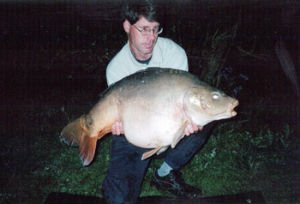
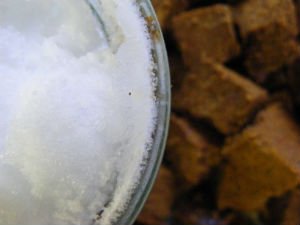
There were some surpring findings, in activating baits, for example discovering that semi-hydrated lactalbumin actually shoots about in the water very actively; seriously assisting in dispersal of everything else through the water column thus radically improving bait effects and results! Add top this the plumes of salty bait solution issuing from the bottom and the halo off the bottom dense carp bait materials gravitate, such as glycerine, tiger nut extract, and LO30, and more, and you’ll get the picture…
The refined result of this exploration and testing over some years was to place dense salts as the very first layer in my PVA bags, often with chopped and crushed seeds soaked in flavours oleoresins and essential soils. The salts added density and weight to often very light substances, but more importantly I exploited salts to help form a current in the water to disperse oils from crushed nuts birdfood pigments etc. I often used these substances as the second significant layer, below other layers and different forms of baits in there, which all worked synergistically so very well.
(I still use this approach to this day, the treatment of the bags and PVA itself is more refined than previously however as carp are too familiar with crude PVA !) But I also discovered that by mixing broken baits in sugars, and then fermenting them this improved performance, and then drying them out using salts had even more effect.
This resulted in the first instance in winter, in producing many more carp on egg and boiling type conventional food-type high protein or balanced nutritional homemade boilies. (I’ve always been a massive fan of highly-soluble high-protein winter carp bait, particularly when treated in many profound ways beyond just the normal defrost and soaking baits!)
(Note: If you’very not tried cured pastes as winter carp bait you’re missing out big-time…)
This drying out treatment also resulted in using salts more in winter and spring, and then using much higher levels of salts within carp bait recipes throughout the year as this definitely improved results!
This began with using Rod Hutchinson Sense Appeals, but also with Minamino liquid food from the chemist, homemade liquidised liver, and then Richworth liquid yeast and alcohol-based mineral tonics and more, including liquid Robin Red which I was and still am a huge fan of, though back in those days as a field tester, I bought from Rod Hutchinson, though in more recent times I’ve sourced this from CC Moore being a consultant for Ian Moore.
The wide spectrum of mineralised salts within Himalayan rock salt make this so far superior in palatability and nutritional impacts compared to mere sodium chloride table salt that is cannot be ignored. However I have also used sea salt in carp bait and other uses for decades to very good effect.
Note: Boilies must have the ability absorb water fast as hydration is vital to both carp health and optimised bait function and maximum dispersal of soluble and other substances. Egg baits whether they contain egg powder, whole egg, egg albumin binder, seriously benefit from use of solvents and salts.
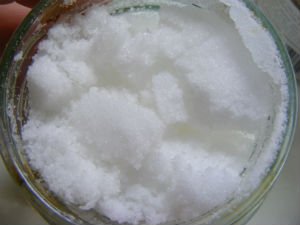
Break away from old-fashioned adherence to egg and you will discover an eye-opening new world of surprising catch-results… Instead of egg, think milk albumin, or glutens, or alginates, gelatines etc, and still combine these with salts, salt form amino acids etc and make your baits much more like water and fish magnets… (There’s far more to this found in the bait Ebook-Course!)
The main minerals which have been detected in carp by scientific trials, the lack of which has been observed to cause signs of deficiency, are sodium chloride (sodium and chlorine,) phosphorus and calcium.
Others include magnesium and zinc, but there are possibly other deficiencies in carp which have not been observed yet through scientific study; e.g.: manganese, selenium, potassium, cobalt sulphur, iodine, chromium, and fluorine. Many of these helps repair and produce new cells, and repair damaged body tissues. Zinc helps in digestion, and magnesium has a role as an enzyme co-factor.
Fish absorb calcium from the water around them. They are rarely deficient in this important skeleton forming mineral, but the rate at which it is retained in the body is set by another important mineral; phosphorus. Increasing phosphorus in the diet is beneficial, as it will increase calcium retention. In common carp, the total body ratio in the body is 4 to 1 of phosphorus to calcium. Ash is often a component of feeds for many animals and fish.
Absorption of dietary phosphorus is not affected by calcium in the diet. Fish meals are rich in both. Plant-origin meals lack in calcium, and are high in phosphorus, but not in a readily digested form; animal sources are better absorbed to counter any possible deficiency in these. Meat and bone meals have their benefits, for example from fish silage. A typical soya meal has an intermediate phosphorus availability of 40 percent.
Phosphorus: The most commonly used phosphorus supplement in carp culture is dicalcium phosphate, with the highest level of availability of 80 percent. It is used at levels not under 0.7 percent of the dry meal.
Potassium: This may be provided through the potassium chloride and oxide salts in treated ash or potash (potassium carbonate), as also supplied in agricultural pig, cattle and horse feeds. (This aspect is very little known and underutilized in carp baits even in 2018…) My friends and I have caught many big carp using animal feeds as the bulk nutritional stimulation content and provision in our baits with totally instant results! Remember the ubiquitous ‘Cell’ yeast is just one form of so many ruminant feed predigest agents.)
Iron is supplied in blood meals, shellfish and crustacean meals derived from oysters and shrimps, prawns and krill; copper in oysters, crabs, lobsters; potassium in mussels, scallops, clams; iodine, phosphorus and selenium in sea foods in general.
An especially mineral rich sweet carp attractor molasses: Black Strap Molasses from second boiled sugar cane, are an extremely underestimated, scientifically proven set of feeding triggers and attractants, also inclusively high in iron and magnesium. The unsulphured grade is the finest, and sweet tasting, with higher sugar content. Normal grade is the bitter tasting, but most nutritious, as used in health supplements, and also used as animal supplements, like horse feed liquid molasses; a very economical source.
Sugar beet molasses are best in highly concentrated form almost in the same state a Marmite. I do not recommend liquid molasses for carp bait when that is mainly water! (Water is exactly what you do not want top put in your baits! (Keep your baits as hygroscopic and water-reactive in as many different ways as possible for maximum fish reaction and feeding stimulation!)
Molasses, with lower sugar content is relatively unpalatable, as with Minamino components without sugars and flavour added, but sugar beet molasses are high in calcium, potassium and chloride salts, and well worth mixing with cane molasses! These being calorific fuels are of course bait activators in their own right, similarly to honeys etc.
I have a reputation for doing things differently. One of these differences is making baits without egg, paste and fast-steamed or clingfilm-protected baits or low temperature baked baits (all avoiding boiling of water-reactive and highly biologically-active nutrients etc, and other solubles out of baits,) before any of this became better known, these having so many advantages.
I am in particular known for making no egg pastes and no-egg heated baits and resilient no-egg hook baits, but one aspect very few know of me is how much I really recommend using molasses as a base ‘glue’ instead of albumins from milk proteins or egg powders etc, for cold water late autumn, winter, and spring carp bait.
Quick tip: Mixing honey, with black strap molasses and Minamino with added soluble yeast is a non-fashionable yet very effective starting point liquid base for beginners… Even a concentration of 1 percent betaine in your bait coming from molasses makes a significant difference to feeding responses! The first treated grade of sugar beet molasses is 50 percent sugar. (Sucrose.)
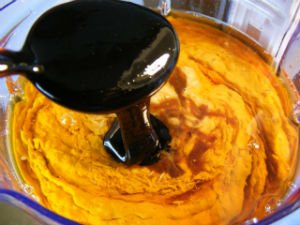
Mineral salts: These have an interesting role in helping the carps own digestive bacteria to break down food, which is another good reason to use them in bait. When carp eat plant material, like water weeds, much energy is lost, as gut bacterial enzymes do the work of breaking down the cellulose cell walls to produce sugars. I feel that additional molasses in the bait help here too. Molasses are used worldwide for industrial fermentation, as it is a highly nutritional food for bacterial activity in production of alcohols…
Molasses are mainly sucrose, but is also highly attractive in bait as it is useful in assisiting in fueling bait activation by microorganisms; yeasts and beneficial bacteria. Even in carp bait not activated by enzymes, but dense in molasses in raw and black strap forms fulfil many of the dietary requirements of iron, magnesium, and essential vitamins and other essential minerals and traces which carp will respond very positively to.
When warmed up carp bait rich in molasses certainly do become actively-fermenting; a vital edge in coloured water in regards to bait dispersal and solubility in very dense coloured water!
Bakers and brewers yeasts are the highly nutritious active ingredients of fermentation. You can help bacteria to predigest your bait when using natural aging or curing methods in moderate or even ambient e.g. 20 degrees Celsius heat conditions, by adding high volumes of molasses to your bait mix.
Yeast extracts, Belachan, CC Moore Feedstim XP in liquid and powder form are other salts sources as are shrimp, krill, crab, squid, fish and a host of other marine sources, and unusual one being abalone.
Robin Red powder and liquid are dense in minerals which is part of its huge attraction to carp, especially in coloured dense water in winter. In fact salts and mineralised salts and trace elements really come into their own in colder temperatures as these are vital maintenance and immunity factors for carp survival and represent a significant part of body conditioning pre-spawning and in spring to summer!
Note that salt is used as a preservative, like sugar, and is useful for dehydrating your bait to make it harder and last longer in the water with nuisance fish. Salts also form ionising channels in well-cured baits which in my view is among salts greatest benefits when used in egg-bound baits which are normally comparatively resistant to water ingress, (egg being significantly insoluble when heated!)
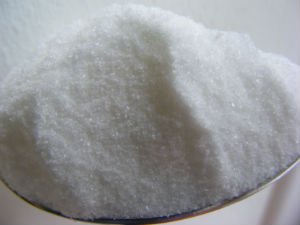
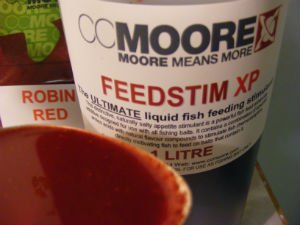
It is interesting that ammonium chloride is used in confectionary, for example in gelatin-based sweets, sweetened with liquorice and sugar, and produces a less salty taste.
An example is the Dutch Double salt liquorice buttons which also contains aniseed oil. These can make great alternative baits! Other examples are Jelly beans, Jelly Babies, Gummy pectin fruits, Liquorice Allsorts and Malted Milk Balls, etc.
Mineral rich sea salt: Apparently, the former common carp record holder, Tim Paisley, used sea salt in his carp bait. Sea salt is superior to table salt, because it still has other natural beneficial mineral salts. Of course, it makes a great taste enhancer too!
Great salts expert tip! So why put salt in your bait? If you use egg in your bait, without active enzymes etc, you absolutley must take action to activate your baits to perform better! Soaking them in alcohols and salts will create a hugely differently performing bait as they will be very significantly more hygroscopic (far more on this in the course.)
They will work significantly more instantly and also work more from deeper inside as the salts will create channels and pores through which your more soluble alcohol-solvated bait substances can leach massively more effectively out of the insoluble egg-sealed baits!
Sodium Chloride: Is essential for life! It was so important for humans, in some regions it used to be worth its weight in gold! It is extremely highly regulated in the body. It is divided, in roughly equal amounts, between the soft tissues and the bones.
Sodium: Makes up 93 percent of the basic mineral elements in the blood serum, and importantly, regulates blood pH. Sufficient sodium is needed for efficient amino acid absorption in the intestine. Correct sodium concentrations allow the muscles to contract. It’s also important in nerve impulse transmissions and heart rhythm.
Sodium Chloride: Is essential for life! It was so important for humans, in some regions it used to be worth its weight in gold! It is extremely highly regulated in the body. It is divided, in roughly equal amounts, between the soft tissues and the bones.
Sodium: Makes up 93 percent of the basic mineral elements in the blood serum, and importantly, regulates blood pH. Sufficient sodium is needed for efficient amino acid absorption in the intestine. Correct sodium concentrations allow the muscles to contract. It’s also important in nerve impulse transmissions and heart rhythm.
Chlorine: Is also essential for life! Chlorine is the main anion in the blood; two thirds of the acidic ions are composed of it. Movement in and out of the cells is essential in maintaining the acid balance of the blood. And obviously, chloride is part of hydrochloric acid produced in the stomach, which is required for the digestion of most foods.
Animals have a hardwired memory for salt detection and remembering its source. They have a definite appetite for it, more strongly than any other mineral. It is often used as a mineral delivery system for other, less palatable salts for animals. Salts play a part in fermentation, and this is very interesting to those thinking about this deep aspect of bait enhancement!
Decades ago when 30 pound commons where a rarity, I caught my first ever 30 pound common carp on a pig feed-based homemade carp bait. This bait was extremely salty and granular. I’m certain that its mineralised salts made this such a great bait! Is it any surprise than so many strains of commons, nearer the natural carp forms of common carp are frequently found to be more ‘natural feeders’ and baits with natural sugars as in honey for instance teamed with mineralised salts certainly catch a significant number of big common carp in my personal experience.
Bird foods: carp are highly stimulated by many bird food ingredients and extracts. Naturally these are significantly rich in vitamins mineral salts, traces, bioactives of many forms.
Dried ground seaweeds: For example kelp. In the form of powders, granules, and meals these are excellent sources of palatable amino acids and highly palatable stimulatory minerals, and are especially high in iron, and provide important dietary fiber that assists peristalsis (the movement of digesting food along the gut, alongside oat and wheat fibre etc). Seaweeds are also exceptionally potent taste enhancers in any carp bait and offer a host of exceptionally palatable amino acids too!
Trace Elements: Other minerals been discovered to be required by carp, but in tiny amounts; examples of these are phosphorous and potassium. One common method to deliberately supplement your carp baits with trace elements is by using a specialist mineral supplement mixture. For those with an eye for the alternative and different, many health tonics based on alcohols are highly effective in conjunction with other products, both liquid and powdered. Although a mineral might be in a commercial animal feed and so be put into a boilie base mix anyway, you can add a minerals and vitamins supplement to your bait, as part of an added nutritional attractor soak.
Fish eyesight close up to baits is far more significant a factor than most anglers realise! I make sure my hooks and every part of my rigs are non-reflective for this reason, and coat parts with bait to help confuse carp as they detect subtle energy fields from hook to swivel, lead etc with which they are all too accustomed to experiencing, and being more cautious in the presence of!
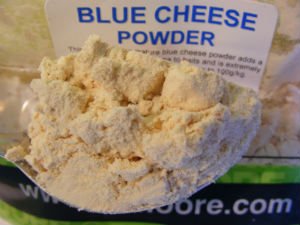
There are so many more nutrients and ingredients you can leverage to achieve more bites and land more big fish. Knowing as much as possible about all these edges, and using them actively in homemade baits and baiting applications converts into countless more big fish being caught much faster than is normal compared to using conventional egg-sealed boiled readymade baits based on fish meals and carbohydrates for instance.
